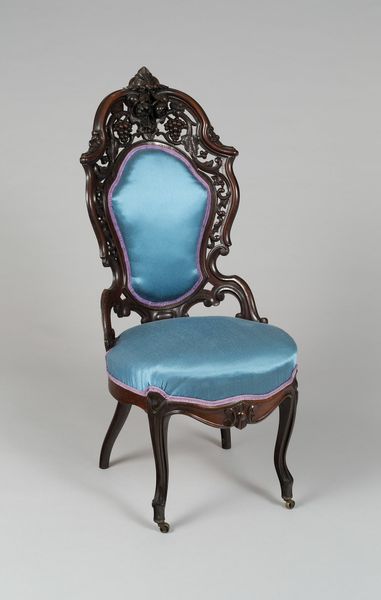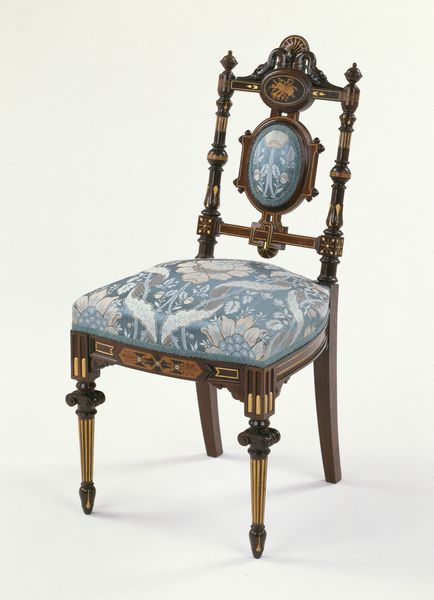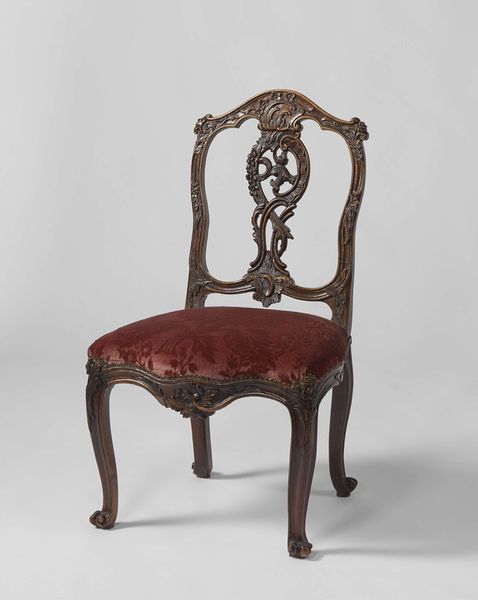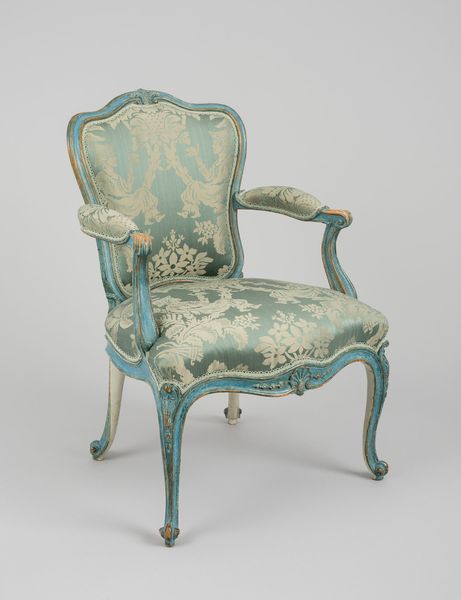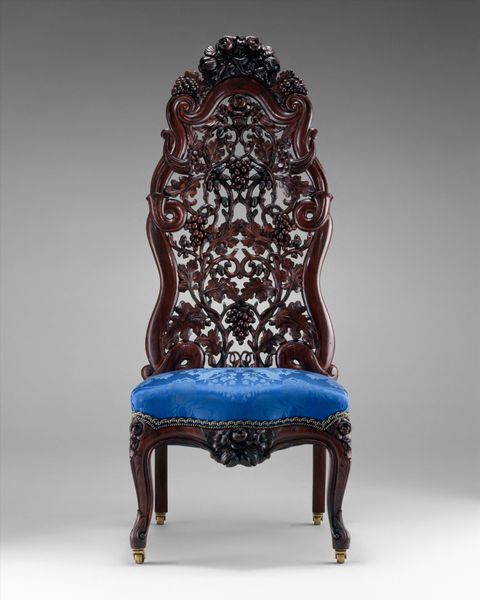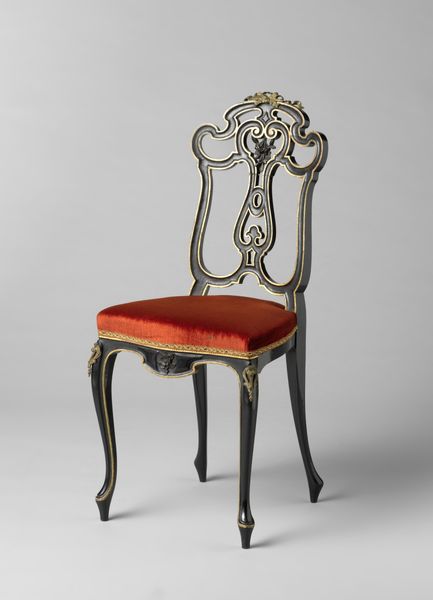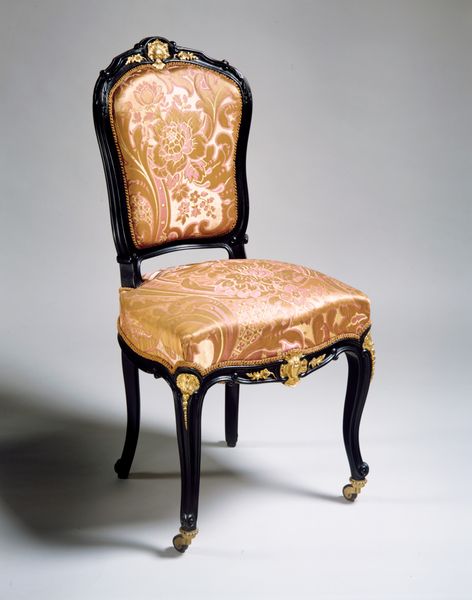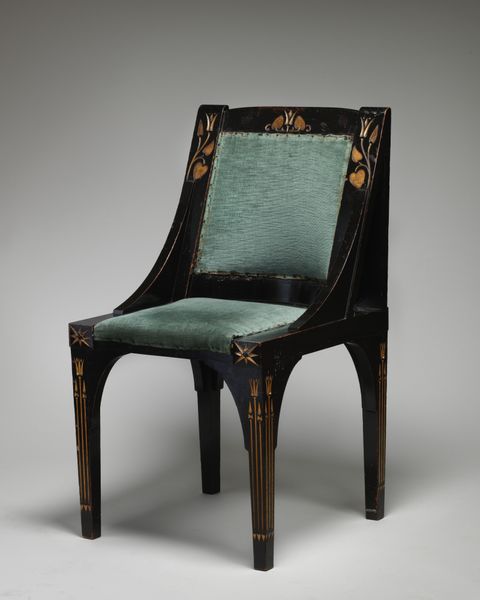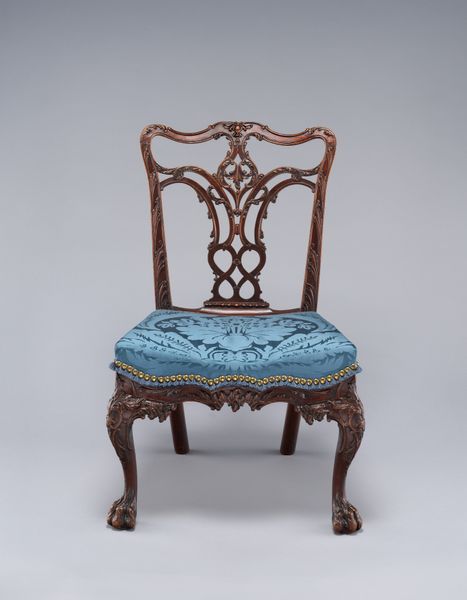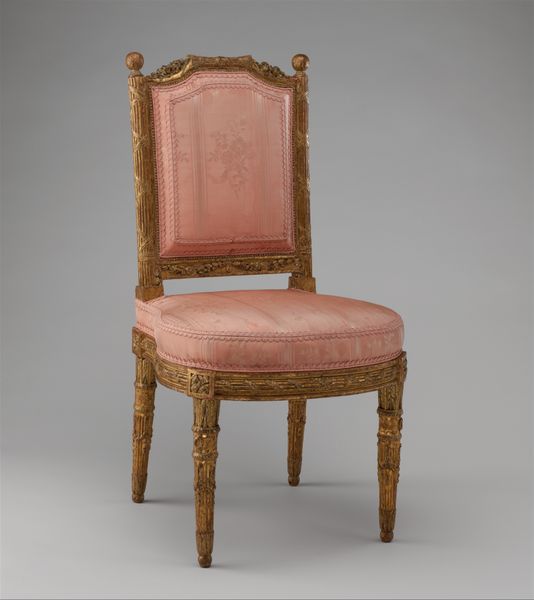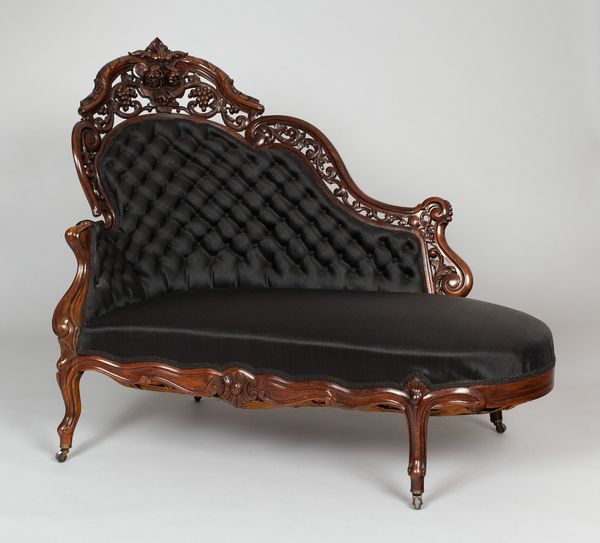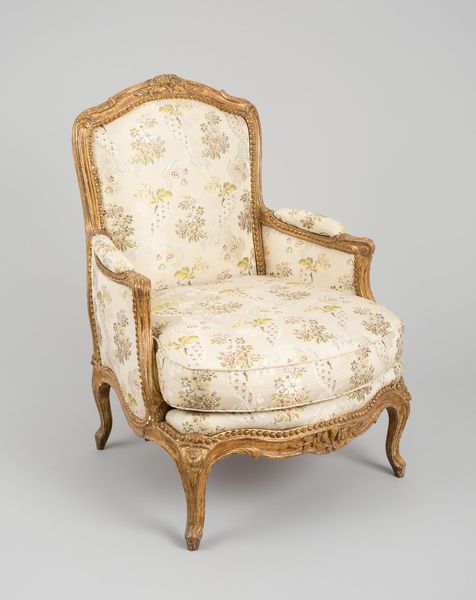
Dimensions: 123.8 × 57.5 × 61.9 cm (48 3/4 × 22 5/8 × 24 3/8 in.)
Copyright: Public Domain
Curator: This exquisite object is an armchair crafted sometime between 1856 and 1865 by J. & J.W. Meeks. You can find it here at the Art Institute of Chicago. Editor: Wow, the contrast between the ornate, dark wood and the pale blue upholstery is immediately striking! It feels regal, almost theatrical. I can imagine someone of considerable power seated here. Curator: Absolutely. Meeks was a leading firm in New York during the period of high Victorian decorative arts, a time marked by social changes and a burgeoning middle class seeking to display their status through opulent furnishings. Editor: So the chair itself is a kind of performance of wealth and refinement. How does the design embody those aspirations? Curator: The deeply carved elements speak volumes. Notice the meticulously rendered floral and fruit motifs – grapes, roses, shells – all popular emblems symbolizing prosperity, domesticity, and cultivation during this era. This carving demonstrates exceptional craftsmanship but also mirrors an upper class Victorian's cultivated taste, particularly in relation to feminine virtues. Editor: It's hard to ignore that imposing scale. Is this purely aesthetic, or does size also play into the societal message? Curator: The size does add to its impressiveness. A chair like this would have dominated a parlor, subtly reinforcing the owner's social standing and signifying an expansive home life. It's not just about comfort; it's about displaying control and sophistication within the domestic sphere. Editor: Right, the intersection of private space and public image. I wonder, too, about the cultural accessibility of that message. Would everyone in that period "read" these symbols in the same way? Or might its significance be more localized to particular groups, those most influenced by shifting social attitudes? Curator: That's a crucial question. While the elite understood these symbols intimately, the working classes might have perceived it differently – perhaps with aspiration, or perhaps with critique and resentment. Editor: Interesting. I find myself considering the embodied experience of this object, the contrast between its beauty and potentially restrictive function for both women and marginalized people within that culture. Thanks, that really provides another dimension for viewing it. Curator: My pleasure. Thinking about art through the lens of broader societal context helps us reveal so much more about their enduring appeal.
Comments
No comments
Be the first to comment and join the conversation on the ultimate creative platform.
